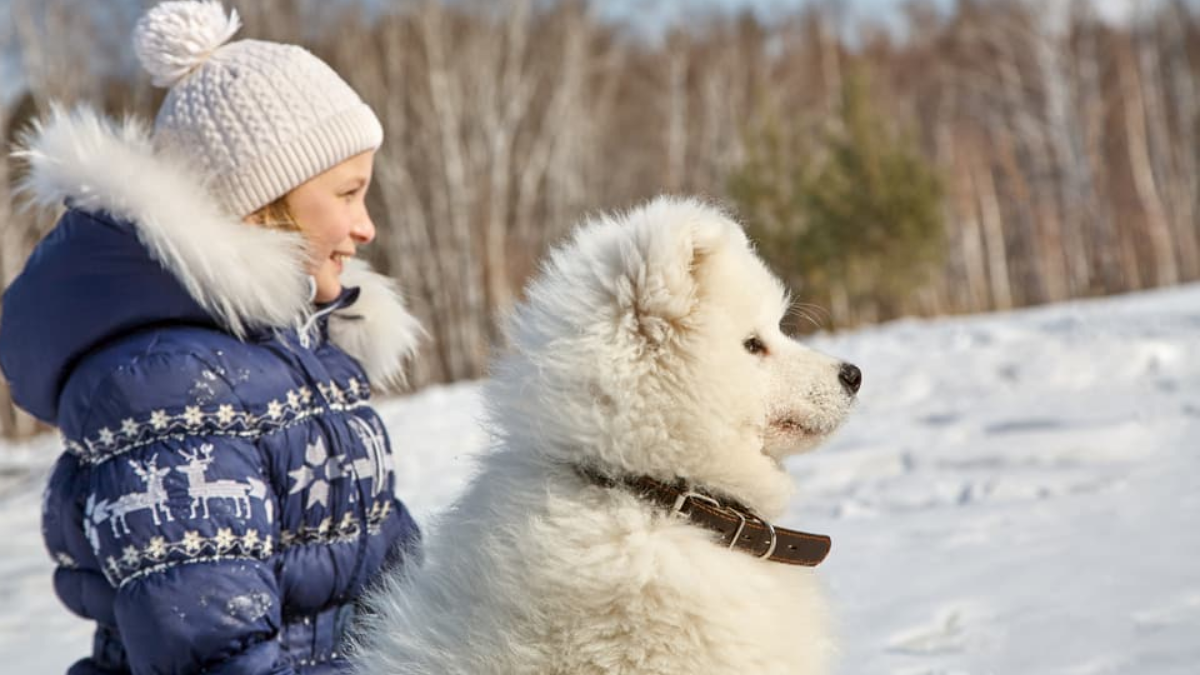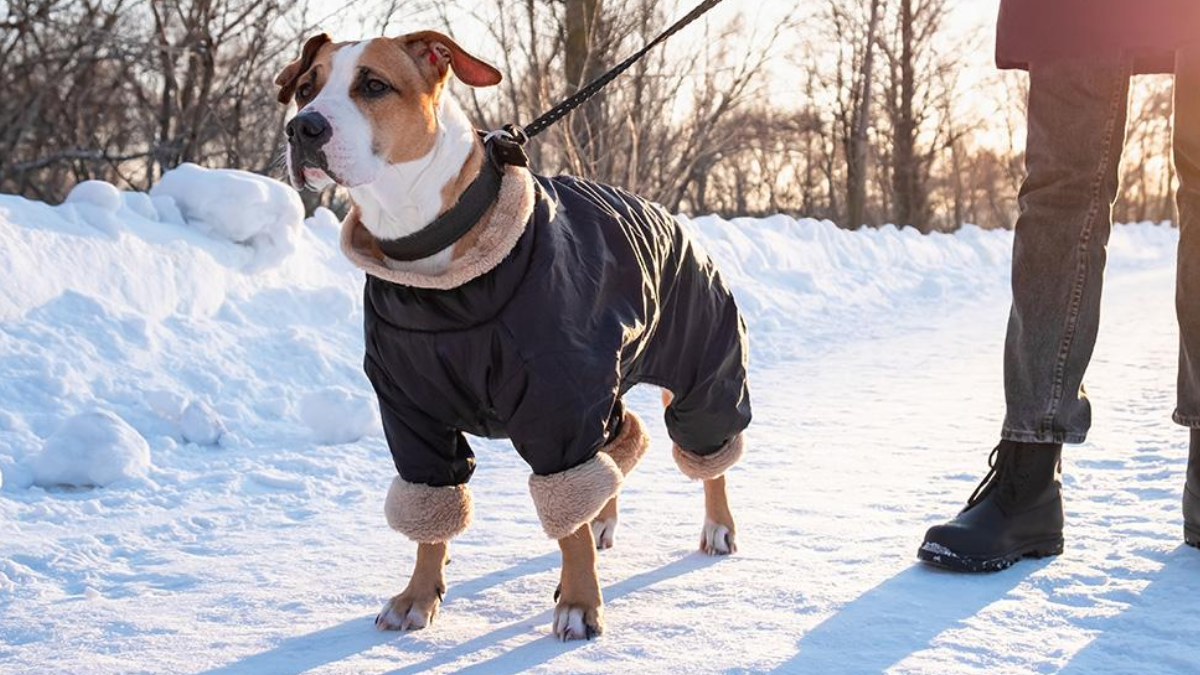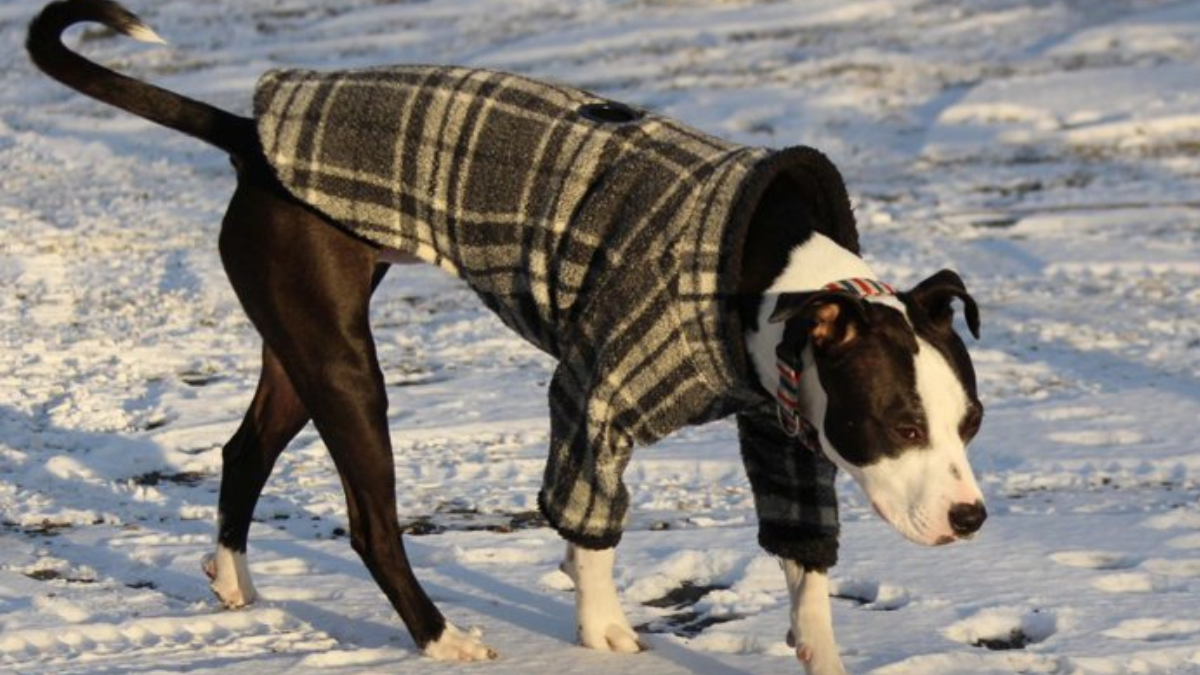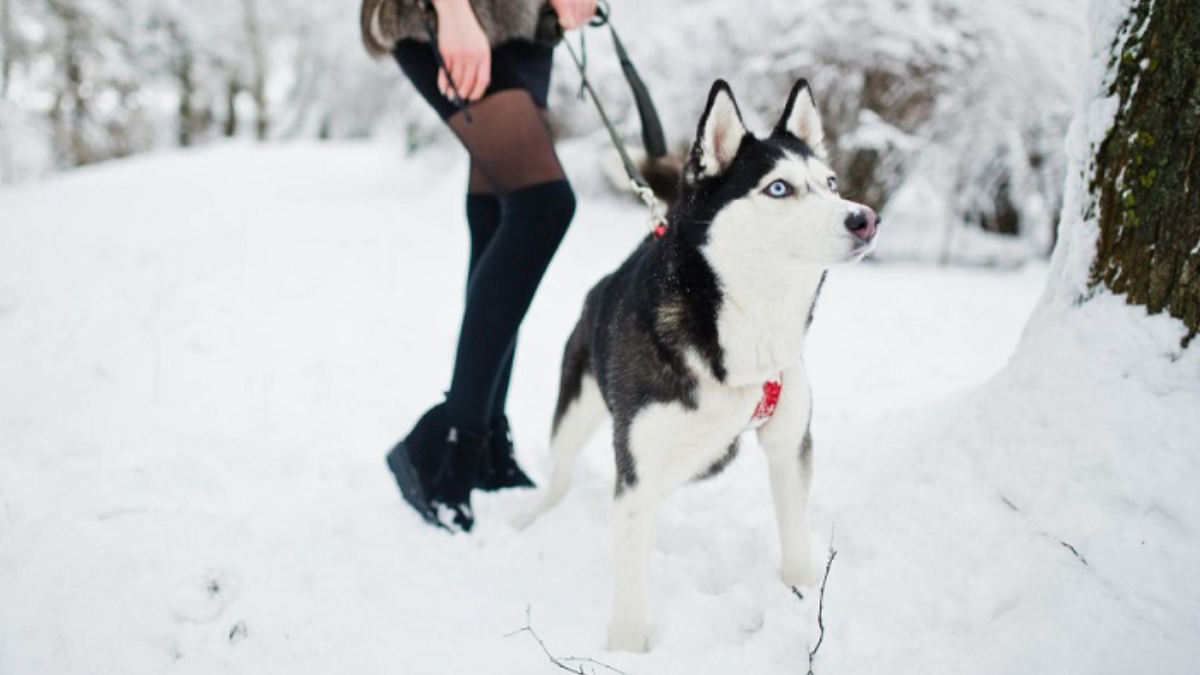It's a common question among dog owners during the winter months: how cold is too cold to walk your dog? While dogs are equipped with fur coats, not all breeds are created equal when it comes to cold tolerance. Furthermore, even dogs with thick coats can still be susceptible to hypothermia and frostbite in extreme temperatures.
Understanding canine cold tolerance is key to determining when it's safe to take your dog for a walk in the winter. Factors such as breed, age, size, and overall health can all play a role in a dog's ability to handle the cold. Temperature thresholds for dog walks can vary widely depending on these factors, as well as the specific conditions of the day such as wind chill and humidity.

In this article, we'll explore the topic of how cold is too cold to walk your dog in depth, covering everything from protective measures for cold weather to recognizing and responding to hypothermia. We'll also provide indoor alternatives for exercise during extreme cold snaps. Keep reading to learn more about how to keep your furry friend safe and healthy during the winter months.
Key Takeaways
- Canine cold tolerance varies by breed, age, size, and overall health.
- Temperature thresholds for dog walks can vary widely depending on multiple factors, including wind chill and humidity.
- Protective measures and indoor alternatives can help keep your dog safe and healthy during extreme cold snaps.
Understanding Canine Cold Tolerance
When it comes to walking your dog in cold weather, it's important to understand your dog's cold tolerance. Not all dogs are created equal, and some breeds are better equipped to handle cold temperatures than others. Additionally, factors such as age and health can also impact a dog's ability to tolerate the cold.
Breed-Specific Tolerances
Different breeds of dogs have different levels of cold tolerance. For example, breeds that were developed in cold climates, such as Huskies, Malamutes, and Samoyeds, are generally better equipped to handle cold temperatures than breeds that were developed in warmer climates, such as Chihuahuas and Greyhounds.

However, it's important to note that even within a breed, individual dogs may have varying levels of cold tolerance. Factors such as coat thickness, body fat percentage, and overall health can all impact a dog's ability to handle the cold.
Below is a table outlining the cold tolerance of some common dog breeds:
| Breed | Cold Tolerance |
|---|---|
| Husky | Very High |
| Malamute | Very High |
| Samoyed | High |
| Golden Retriever | Medium-High |
| Labrador Retriever | Medium |
| Chihuahua | Low |
| Greyhound | Low |
Age and Health Factors
In addition to breed, a dog's age and health can also impact their ability to handle the cold. Puppies and senior dogs are generally less tolerant of cold temperatures than adult dogs. Dogs with health issues such as arthritis or heart disease may also have a harder time in the cold.

It's important to keep an eye on your dog for signs of discomfort or distress in cold weather. Signs that your dog may be too cold include shivering, lethargy, and reluctance to walk or move. If you notice these signs, it's time to head back inside and warm up.
Overall, understanding your dog's cold tolerance is key to keeping them safe and comfortable in cold weather. By taking into account factors such as breed, age, and health, you can make informed decisions about when it's safe to take your dog for a walk in the cold.
Temperature Thresholds for Dog Walks
General Guidelines
When it comes to walking dogs in cold weather, it's important to keep in mind that different dogs have different temperature thresholds. Some dogs are more cold-tolerant than others, and some have a thicker coat or more body fat to keep them warm. In general, however, most dogs can tolerate temperatures between 45 and 60 degrees Fahrenheit without any discomfort.
Once the temperature drops below 45 degrees Fahrenheit, it's important to take some precautions to keep your dog comfortable and safe. For example, you may need to shorten your walks or provide your dog with a warm jacket or sweater to wear. Additionally, you should always keep an eye on your dog's behavior and body language to make sure they are not showing any signs of discomfort.

Signs of Discomfort
If your dog is uncomfortable in the cold, they may show signs such as shivering, whining, or lifting their paws off the ground. They may also start to move more slowly or try to find shelter. If you notice any of these signs, it's important to take action to keep your dog warm and comfortable.
One way to help your dog stay warm is to limit their exposure to the cold. This may mean shortening your walks, taking more frequent breaks, or avoiding areas with strong winds or low temperatures. You can also provide your dog with a warm jacket or sweater to wear, and make sure they have access to a warm, dry place to rest when they get home.
In conclusion, it's important to be aware of your dog's temperature threshold when walking in cold weather. By following these general guidelines and watching for signs of discomfort, you can help ensure that your dog stays safe and comfortable on their walks.
Protective Measures for Cold Weather
Appropriate Dog Clothing
When temperatures drop, it is important to make sure your furry friend is dressed appropriately. Dogs with thin fur or short hair are more susceptible to the cold, and therefore, require extra protection. Consider purchasing a coat or sweater for your dog, especially if they are a smaller breed. It is important to note that not all dogs enjoy wearing clothing, so it is important to gradually introduce it to them and ensure that it fits properly and does not restrict their movement.

Paw Protection
Walking on ice and snow can be tough on a dog's paws. Consider applying paw balm or petroleum jelly to protect their paw pads from the cold and prevent them from cracking. Additionally, consider investing in booties for your dog to wear during walks. Booties can also protect against salt and other chemicals used to melt ice, which can be harmful if ingested or irritate their paws.
Duration and Intensity of Walks
When the temperature drops, it is important to adjust the duration and intensity of your dog's walks. Shorter walks are recommended, and it is important to pay attention to your dog's behavior to ensure they are not showing signs of discomfort or distress. Signs of discomfort may include shivering, lifting their paws, or whining. It is also important to avoid walking on icy or slippery surfaces to prevent accidents and injuries.
By taking these protective measures, you can ensure that your furry friend is safe and comfortable during the colder months.
Recognizing and Responding to Hypothermia
Symptoms of Hypothermia
Hypothermia occurs when an animal's body temperature drops below normal levels. Symptoms of hypothermia in dogs include shivering, lethargy, weakness, and difficulty walking. As the condition worsens, the dog may exhibit signs of confusion, disorientation, and shallow breathing. Severe hypothermia can lead to loss of consciousness and even death.
Immediate Actions
If you suspect your dog is experiencing hypothermia, it is important to act quickly. Move your dog to a warm, dry area and cover them with a blanket or towel. You can also use a heating pad or warm water bottle wrapped in a towel to help raise your body temperature. Never use direct heat sources such as heating lamps or hot water as this can cause burns.

It is also important to seek veterinary care as soon as possible. Hypothermia can lead to other health complications such as frostbite and pneumonia, so a thorough examination is necessary to ensure your dog's well-being.
In summary, recognizing the symptoms of hypothermia and taking immediate action can help prevent serious health complications in your dog. Always prioritize your pet's safety and well-being when considering outdoor activities in cold weather.
Indoor Alternatives for Exercise
When the weather is too cold to walk your dog, there are still plenty of ways to keep them active and healthy indoors. Here are some indoor alternatives for exercise:
Interactive Play
Interactive play is a great way to keep your dog engaged and active while indoors. There are many toys available that encourage play, such as puzzle toys, treat-dispensing toys, and tug toys. Playing fetch indoors is also an option, as long as you have enough space and a soft ball or toy that won't damage your home.
Indoor Training Exercises
Indoor training exercises are another way to keep your dog active and mentally stimulated. Basic obedience training can be done indoors, such as teaching your dog to sit, stay, and come. You can also try more advanced training exercises, such as agility training or scent work.
Here are some specific indoor training exercises to try:
- Hide and seek: Hide treats around the house and encourage your dog to find them.
- Stair training: Teach your dog to go up and down stairs on command.
- Treadmill training: If you have a treadmill, you can train your dog to walk on it.

Overall, many indoor alternatives for exercise can keep your dog healthy and happy, even when it's too cold to go outside.
Conclusion:
In conclusion, determining the threshold for "How Cold is Too Cold to Walk Your Dog?" requires consideration of various factors to ensure the safety and well-being of your furry companion. While there isn't a universally defined temperature limit, pet owners should prioritize their dog's comfort and health when venturing out in cold weather.
It's essential to recognize that different breeds have varying tolerance levels to cold temperatures. Factors such as coat thickness, size, age, and overall health play significant roles in determining a dog's ability to withstand cold weather. Additionally, environmental conditions like wind chill and humidity can further impact a dog's comfort level outdoors.
As responsible pet owners, it's crucial to monitor your dog for signs of discomfort or distress during walks in cold weather. Symptoms such as shivering, lifting of paws, or reluctance to continue walking indicate that it may be too cold for your dog. In such cases, it's best to shorten the walk or consider indoor exercise alternatives to prevent potential health issues like hypothermia or frostbite.
Ultimately, prioritizing your dog's well-being by making informed decisions about when to walk them in cold weather ensures a safe and enjoyable outdoor experience for both you and your furry friend.
Frequently Asked Questions
- At what temperature should I avoid taking my dog for a walk?
- It is generally advised to avoid taking your dog for a walk if the temperature drops below 20°F (-6°C). However, this can vary depending on your dog's breed, size, age, and overall health. It's always best to consult with your veterinarian to determine the appropriate temperature range for your specific dog.
- What are the risks of walking my dog in cold weather?
- Walking your dog in cold weather can pose several risks, including hypothermia, frostbite, and respiratory issues. Dogs can also slip and fall on icy surfaces, which can lead to injuries. It's important to keep an eye on your dog's behavior and body language during walks in cold weather to ensure they are not experiencing any discomfort or health issues.
- How can I tell if my dog is too cold during a walk?
- Signs that your dog may be too cold during a walk include shivering, lethargy, reluctance to walk, and seeking warmth. If you notice any of these signs, it's important to bring your dog inside and warm them up immediately. You can also invest in a dog coat or sweater to help keep them warm during walks in cold weather.
- Can certain dog breeds tolerate colder temperatures for walks?
- Yes, certain dog breeds are better suited for colder temperatures than others. Breeds with thick coats, such as Huskies and Malamutes, are better equipped to handle colder temperatures than breeds with thin coats, such as Greyhounds and Chihuahuas. However, it's important to remember that all dogs are individuals and may have different tolerances for cold weather.
- What precautions should I take when walking my dog in winter?
- When walking your dog in winter, it's important to take several precautions, including dressing them appropriately, avoiding icy surfaces, and keeping walks short. You should also be mindful of your dog's behavior and body language, and bring them inside if they show any signs of discomfort or health issues.
- How does cold pavement or snow affect my dog's paws during walks?
- Cold pavement or snow can cause your dog's paws to dry out and crack, which can be painful and lead to infections. You can help protect your dog's paws by applying a paw balm or wax before walks and wiping their paws with a warm, damp cloth after walks to remove any snow or ice. You can also invest in dog booties to help protect their paws from the cold.




